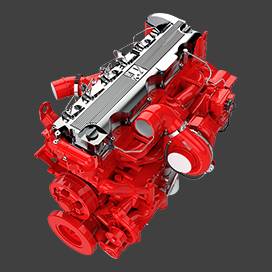Dec . 04, 2024 09:44 Back to list
brake drum and rotor lathe
The Importance of Brake Drum and Rotor Lathe Maintenance
Brake systems are crucial for the safety of any vehicle, and they consist of several components that must function correctly to ensure optimal performance. Among these components, brake drums and rotors are essential for the vehicle's braking efficiency. Over time, these parts can wear down due to friction, leading to decreased performance and potentially dangerous situations. To maintain these components, many automotive professionals turn to brake drum and rotor lathes as essential tools.
Understanding Brake Drums and Rotors
Before delving into the lathe process, it's vital to understand the differences between brake drums and rotors. Brake drums are typically used in drum brake systems, where friction is produced by brake shoes pressing against the inner surface of a cylindrical drum. On the other hand, rotors are found in disc brake systems and involve brake pads squeezing against a flat, circular disc to create stopping power. Both parts can experience warping, scoring, and other forms of wear, which necessitate regular inspection and maintenance.
The Role of Lathe in Brake Maintenance
The brake drum and rotor lathe is a machine designed to restore these components to their original specifications. When a brake drum or rotor becomes uneven or develops grooves due to wear, it can lead to various issues, including vibrations, reduced braking efficiency, and increased wear on brake pads. A lathe allows technicians to turn the surface of the drum or rotor, removing any damaged material and creating a smooth finish. This process improves not only the performance of the braking system but also the overall safety of the vehicle.
brake drum and rotor lathe

Using a lathe involves several steps, including proper setup, measurement, and adjustment. Technicians must first assess the condition of the drum or rotor, measuring its thickness to determine if it can be safely resurfaced. If the component is within specifications, it is mounted on the lathe. The lathe then removes a thin layer of material from the surface, smoothing out any imperfections.
Benefits of Using a Lathe
Utilizing a brake drum and rotor lathe offers several significant advantages. Firstly, it is a cost-effective solution compared to replacing worn brake components entirely. By resurfacing drums and rotors, automotive shops can save their customers money while ensuring that their vehicles continue to operate safely.
Secondly, lathe resurfacing helps to prolong the life of brake components. By providing a smooth surface, it reduces the likelihood of uneven wear on brake pads, leading to a more efficient braking process and extended brake pad lifespan. Additionally, a well-maintained braking system can lead to improved vehicle handling and stability, enhancing overall driving performance.
Conclusion
The maintenance of brake drums and rotors is not just about routine service; it is a critical component of vehicle safety and performance. Brake drum and rotor lathes play a vital role in this process, enabling automotive technicians to restore worn components effectively. By investing in lathe services, vehicle owners can ensure better braking efficiency, reduced costs in the long run, and, most importantly, a safer driving experience. As vehicles continue to evolve, understanding and maintaining these crucial braking components will remain a priority for both automotive professionals and drivers alike.
-
HINO Industrial Efficiency-Jiangsu Hino Industrial|Productivity Optimization&Cost Reduction
NewsJul.12,2025
-
HINO-¡Ң���ຽ��е��������˾|Advanced Industrial Solutions&Energy Efficiency
NewsJul.12,2025
-
Premium Brake Drum Iveco – Durable Drum Brake Drum & Brake Shoe Solutions
NewsJul.08,2025
-
High-Performance Brake Drum Liza for Enhanced Safety Reliable Drum Brake Drum & Brake Shoe Solutions
NewsJul.08,2025
-
High-Quality Brake Drum MAZ – Durable Drum Brake Drum & Brake Drum and Brake Shoe for Optimal Performance
NewsJul.07,2025
-
High-Quality Brake Drum Kamaz for Reliable Performance Durable Drum Brake Drum & Brake Shoes
NewsJul.07,2025
